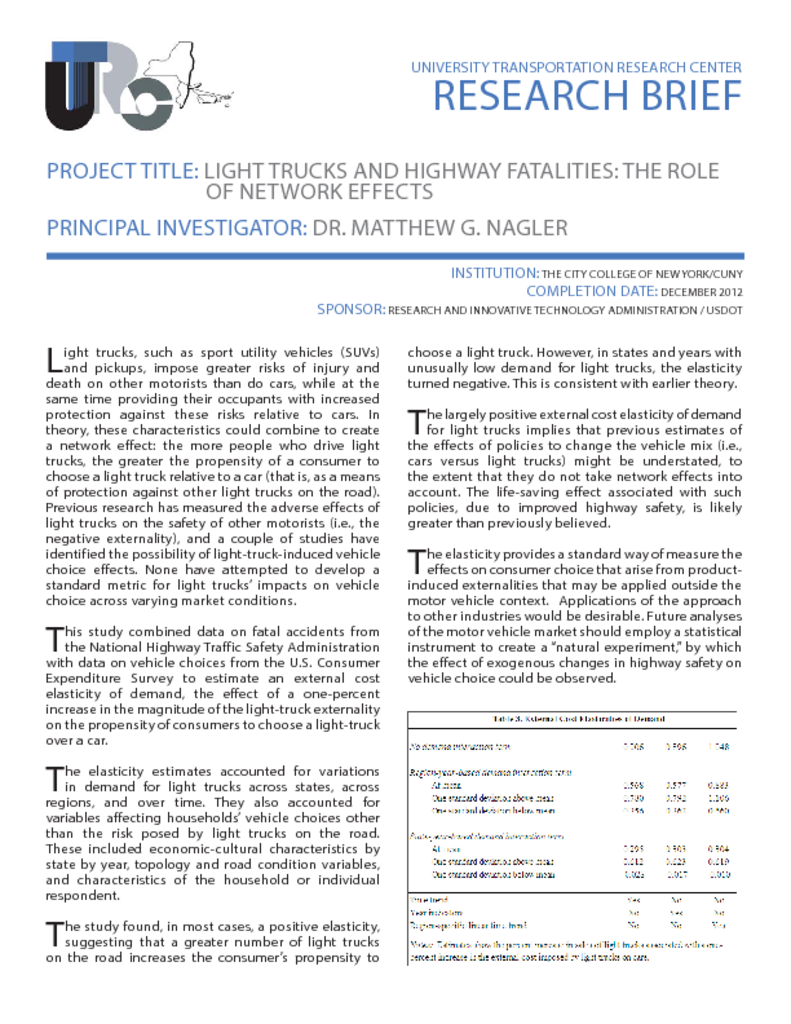Light trucks, such as sport utility vehicles (SUVs) and pickups, impose greater risks of injury and death on other motorists than do cars, while at the same time providing their occupants with increased protection against these risks relative to cars. In theory, these characteristics could combine to create a network effect: the more people who drive light trucks, the greater the propensity of a consumer to choose a light truck relative to a car (that is, as a means of protection against other light trucks on the road). Previous research has measured the adverse effects of light trucks on the safety of other motorists (i.e., the negative externality), and a couple of studies have identified the possibility of light-truck-induced vehicle choice effects. None have attempted to develop a standard metric for light trucks’ impacts on vehicle choice across varying market conditions.
This study combined data on fatal accidents from the National Highway Traffic Safety Administration with data on vehicle choices from the U.S. Consumer Expenditure Survey to estimate an external cost elasticity of demand, the effect of a one-percent increase in the magnitude of the light-truck externality on the propensity of consumers to choose a light-truck over a car.




